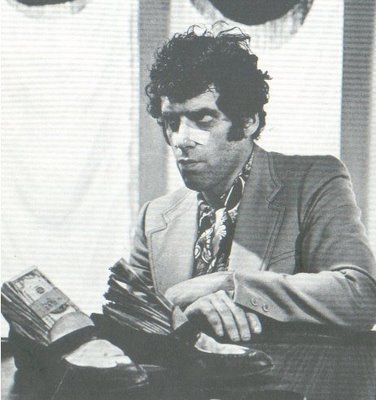Part of a series celebrating the random movies I tape off television at 4 in the morning using my digital cable's DVR recorder
I'm a great admirer of Stanley Donen's
Charade, starring Cary Grant and Audrey Hepburn. It's often described as the best Hitchcock movie Hitchcock never made, and let's call that a compliment: there are moments, particularly in the brilliant climactic standoff between Grant and the movie's shadowy villain (saying who it is will ruin it for those of you haven't had the pleasure of seeing the movie), that rank with the Master of Suspense, and there are times — mostly when I'm substantially inebriated — that I think some of the editing in
Charade rates it ahead of some Hitchcock.
Donen is mostly known as a musical director: he did
Seven Brides for Seven Brothers,
Singin' in the Rain, and one of Sweeney's
ten favorite movies of all time It's Always Fair Weather (the latter two are co-directed by Gene Kelly). As a thriller,
Charade was a bit of a departure, but it was a terrifically made departure, and it was also a hit, and so Donen got the chance to make a second one. Donen's second crack at the genre,
Arabesque, was also supposed to star Cary Grant, but, having heard too much criticism about being too old to romance his
Charade co-star, he passed, and the role went to Grant's good buddy, Gregory Peck. By the by, I know all this because Robert Osborne on TCM told me this — the DVR records his delightfully insightful introductions too.
Arabesque isn't
Charade — Gregory Peck isn't Cary Grant — but it's a strong follow-up. Peck is a professor of linguistics specializing in hieroglyphics, pressed into service by a Middle Eastern Prime Minister looking to stop a group of terrorists who wish to see him dead. The painfully sexy Sophia Loren is involved with the terrorists, though her true allegiance is hazy.
Charade fans may recognize a similar framework with the gender roles flipped: in the earlier picture, it's the female Hepburn whose thrust into intrigue and it's the male Grant who she's never quite sure she can trust.
The stakes are never quite as real as
Charade:
Arabesque misses George Kennedy and James Coburn as menacing heavies even more than it misses Grant (Peck's character is a bit of a fuddy duddy, and Peck's ramrod straight posture works for it). The villain in
Arabesque is like something out of
Inspector Gadget with wraparound sunglasses and a pet falcon he keeps permanently perched on his arm. But Donen seems more at home in the genre, and his camerawork is even more expressive than before. He constantly plays with mirrors or other objects that distort the camera's vision — concave lenses, huge glass orbs, and, in a particularly moody scene, a chandelier in the middle of a spiral staircase, which refracts and divides Peck and Loren as they dash down it. With Loren's character constantly redefining who she works for and a McGuffin that is a cipher for a secret code, Donen literalizes the idea that appearances cannot be trusted and by constantly shifting the camera image before our eyes. The voyeuristic aspects of the film, with characters constantly watching or being watched, will particularly appeal to Hitchcock fans.
Some of the work with the onscreen mirrors is devilishly clever — one shot where Peck hides from pursuers and watches them in a mirror he sees through a cracked door must have taken days to choreograph — and the suspense sequences are equally witty. In a desperate gamble, Peck hides the cipher in a piece of candy where he thinks the villains won't find it. And they don't: they search him and dump the candy, but before he can retrieve it someone else does, forcing he and Loren to follow the candy stealer, picking each wrapper as he drops it. Imagine: the fate of a nation rests on a character being a dependable litterer! One of the wrappers gets stepped on by a guard at Buckingham Palace, who, as you know, cannot move for the duration of their entire shift. Luckily Sophia Loren is painfully sexy.
Arabesque is class. It's never been released on DVD. Thank you DVR!
















